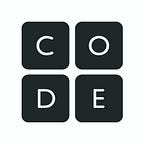It might be an understatement to say 2020 was an unprecedented year. Teachers, students and parents dealt with all the uncertainties that came with school closures and a quick transition to virtual or hybrid learning. But through it all, Hour of Code 2020 was an incredible success thanks to our resilient computer science community and the generosity and support of our many partners.
It may have looked different than other years, but Hour of Code 2020 was still a smashing success, with more than 68,000 events registered across more than 180 countries! Over 1.1 billion students around the world have now tried an Hour of Code since Code.org’s efforts began in 2013.
“I was very pleased that the Hour of Code activities were provided this year. It gave the students something to look forward to during a very ‘different’ school year. Thank you.” — Elementary school teacher in Michigan
Teachers and students still love Hour of Code
Based on survey responses from more than 400 Hour of Code organizers and educators, more than half of respondents said they would continue teaching computer science beyond just an hour.
Hour of Code also helps spark a broader interest in teaching and learning computer science! Nearly two-thirds of respondents said they are more interested in teaching computer science, while almost a quarter are already teaching the subject.
Despite the challenges and disruptions to the school system this year, more than 95% of respondents say they had a “great” or “good” Hour of Code experience.
Thank you to all our dedicated Hour of Code organizers, teachers, and partners who made this such an enjoyable experience for millions of students around the globe!
Thank you for tuning in to CodeBytes!
New for 2020, thousands of students, parents and teachers around the globe tuned in to daily CodeBytes lessons, which aired live twice-daily during CS Education Week.
These 20-minute computer science lessons touched on topics such as artificial intelligence and machine learning, and featured some of our most popular tutorials, including Dance Party and Minecraft: Hero’s Journey.
“My students found this to be a refreshing break from my regular lessons. I allowed them to only do CodeBytes for the entire week. I created a simple form Day 1 -5 with the video link and a couple of questions to demonstrate they watched. Success!” — Middle school teacher in Kentucky
Out of thousands of students, parents and teachers who tuned in to watch CodeBytes, the majority of nearly 350 respondents to our CodeBytes survey said they were significantly more interested in learning about computer science after participating in a lesson.
If you missed any lessons or want to try a few for the first time, all the recordings are available to watch on YouTube. If you’re unable to stream YouTube in your classroom or at home, recordings are also available to download.
All about AI
In case you missed it, we announced a brand new initiative with Microsoft to bring artificial intelligence and machine learning curriculum to every student, from elementary school to high school. As part of this new effort, we released a seven-video series featuring leaders from industry and academia discussing AI and ML basics.
During CSEdWeek, we also hosted an expert-led panel discussion, Ethics of AI, for those who want to learn more about ethical considerations surrounding Artificial Intelligence.
“My students LOVED Teachable Machine. I couldn’t get them to stop testing it to move on to the next stage!” — Elementary school teacher in New York
Young women and students of color make CS strides … again!
Just in time for Computer Science Education Week, College Board shared data showing that the AP Computer Science exams (AP CSA and AP CS Principles combined) saw 13% growth in tests taken.
Young women continue to be the fast-growing group of test-takers across both tests. In CS Principles specifically — which Code.org began offering in 2017–50% of all underrepresented racial and ethnic group students were Code.org students! Read our blog for more.
“I am a new STEM teacher at my school, and I serve each child in my school. I introduced the Hour of Code to every student, from Kindergarten to 5th grade, and all of them fell in love with it. I especially loved how many students of color and girls of color were into the Hour of Code. So many of my students were unaware of the opportunities that they have as far as careers go and it was so exciting to talk to them about that.” — Elementary school teacher in North Carolina
Here are some other things 2020 Hour of Code participants said
“To spark interest, I offered a treat to the students with the most completed levels and most lines of code. My winner completed 234 levels and 5587 lines of code! I was so proud of them!” — Middle school teacher in California
“My kids could not believe that some schools don’t do coding all the time!” — Elementary school teacher in Texas
“A lot of my students had done Hour of Code in elementary or middle school, so it was exciting to see them try more challenging activities this year!” — High school teacher in North Carolina
“I just love that every child can participate no matter their level of prior knowledge.” — Elementary school teacher in Virginia
Looking ahead after an unforgettable year
Thank you to all the schools, teachers, community members, donors and CS advocates whose passion, patience and perseverance helped make the 2020 Hour of Code another great success.
If you’re looking to take the next step in your classroom, learn how you can help bring computer science to a school near you, or if you’re a teacher who is interested in teaching computer science in your classroom, learn more about our Professional Learning programs and apply. All of us at Code.org are wishing you a safe and happy 2021, and we can’t wait for the next Hour of Code!
-The Code.org Team
